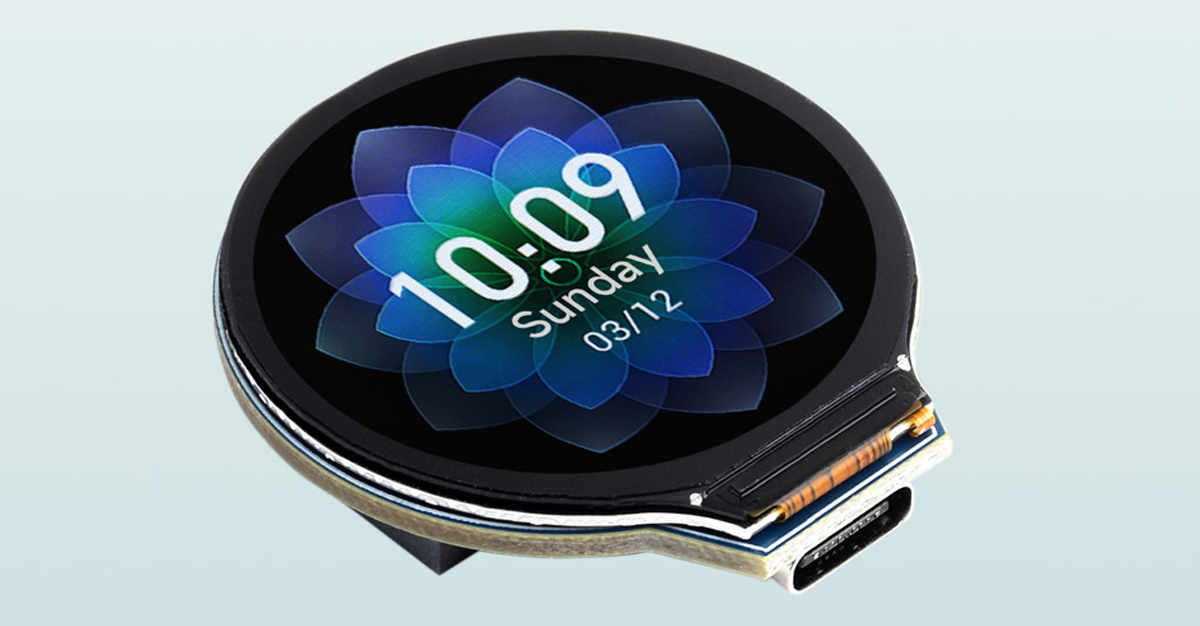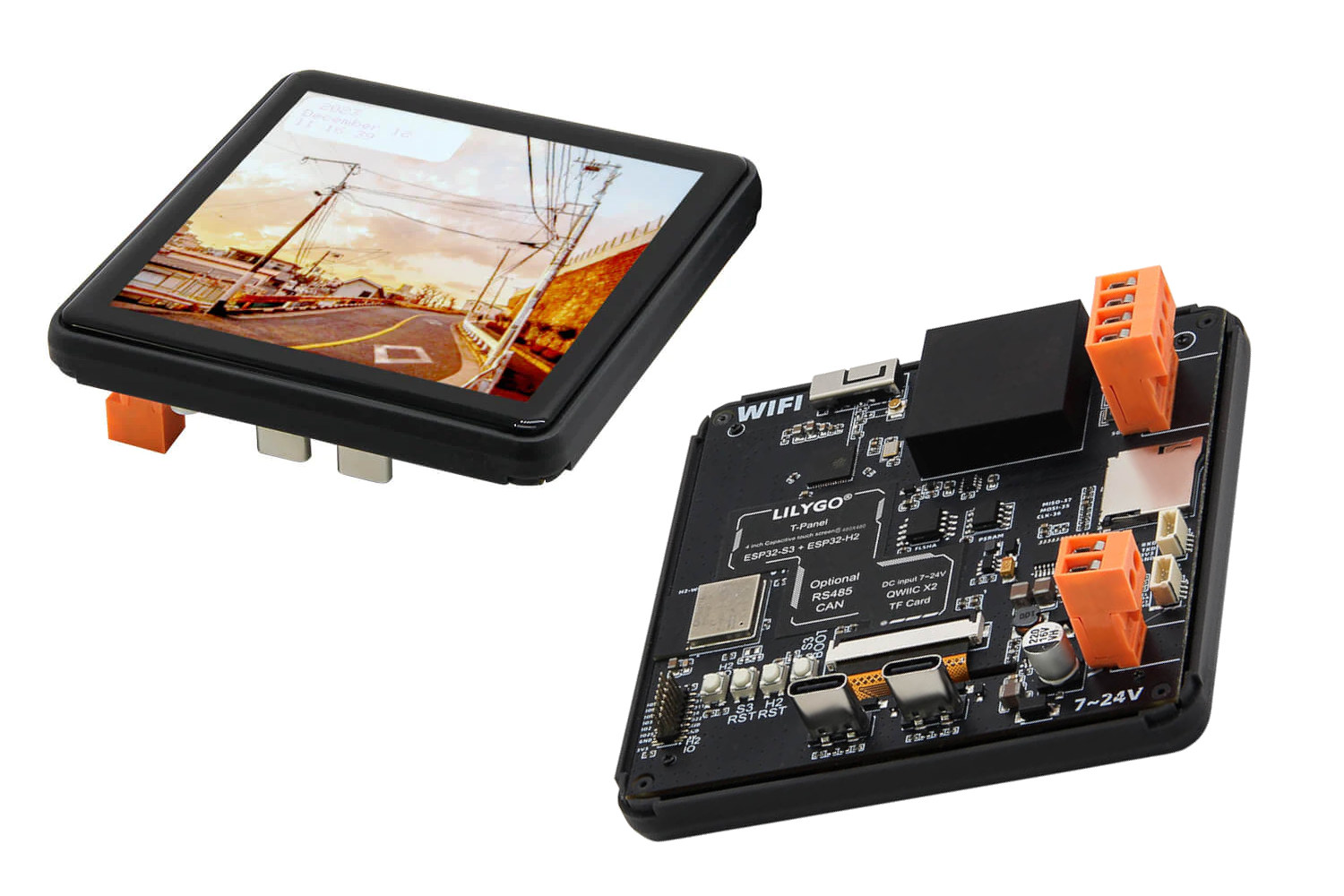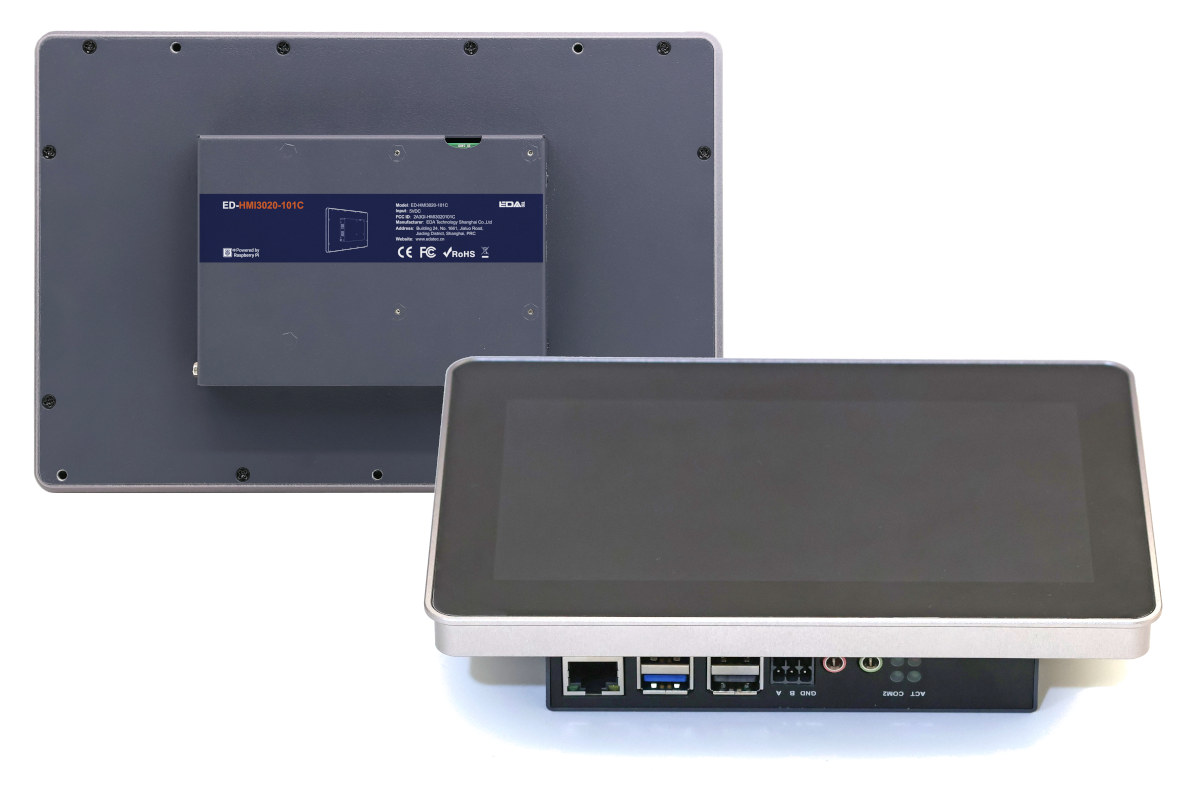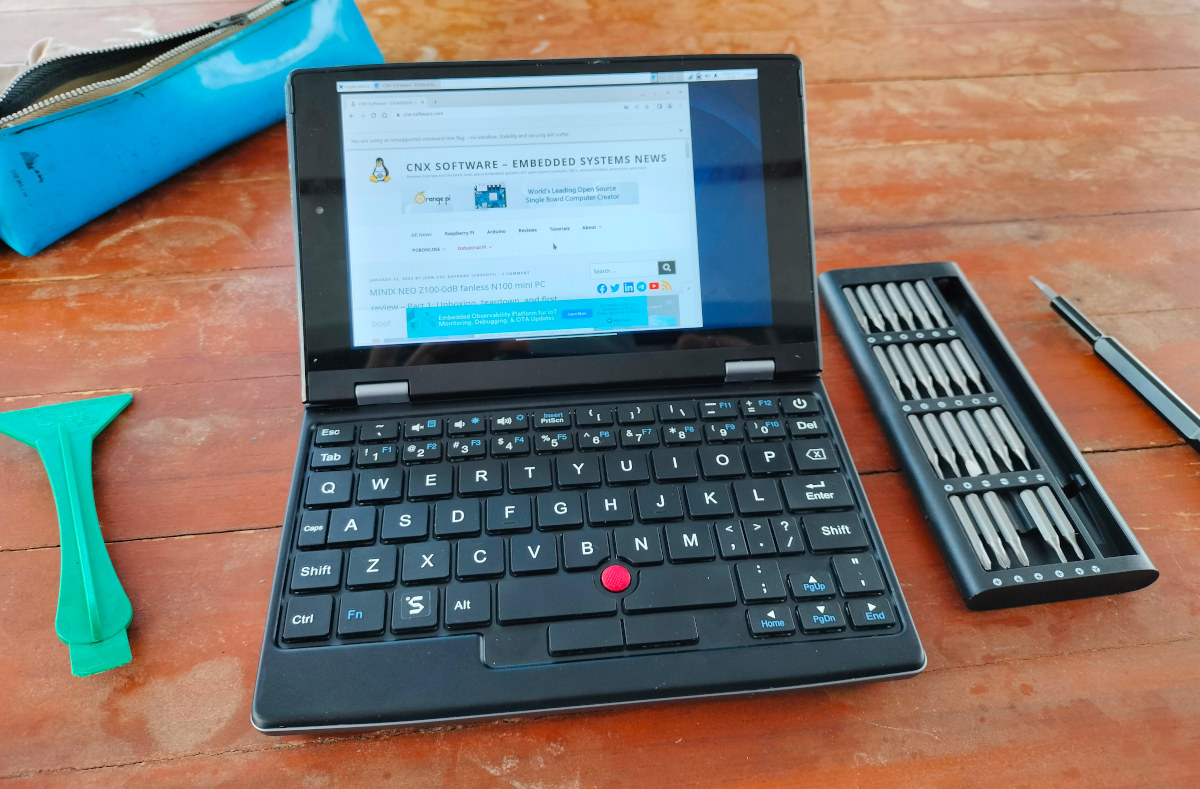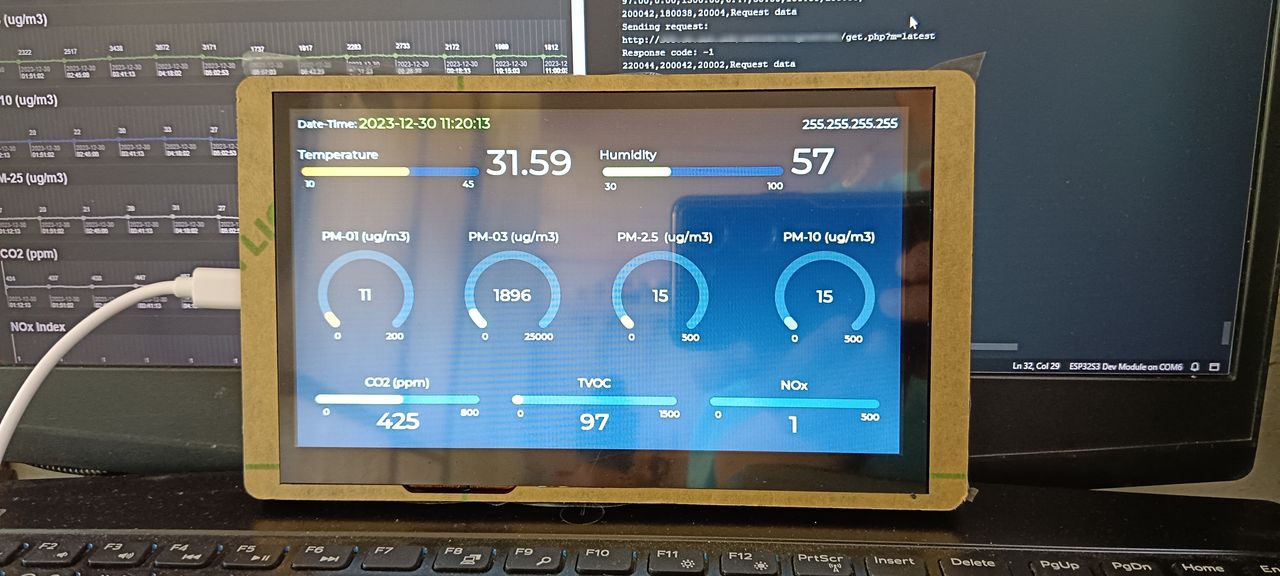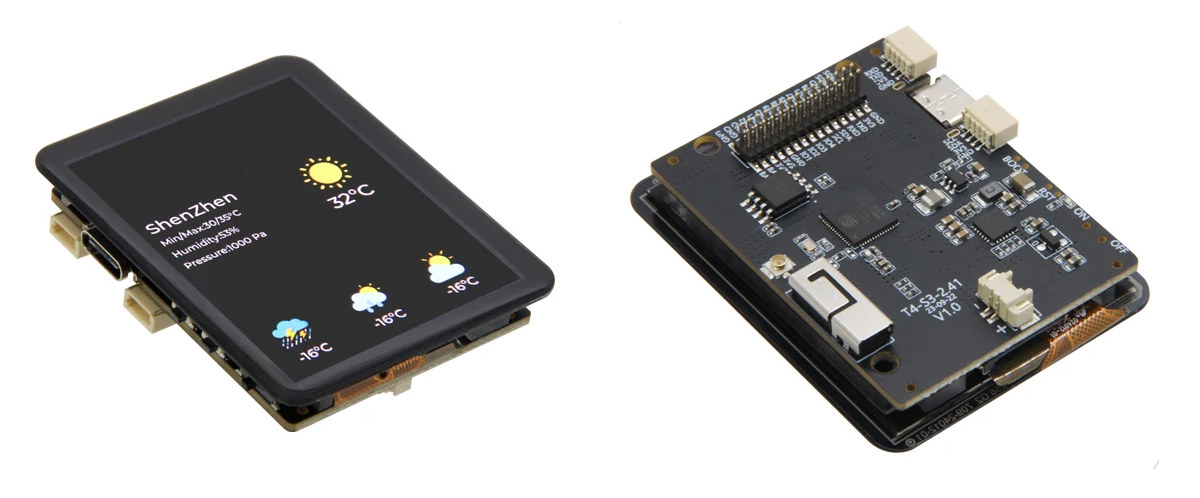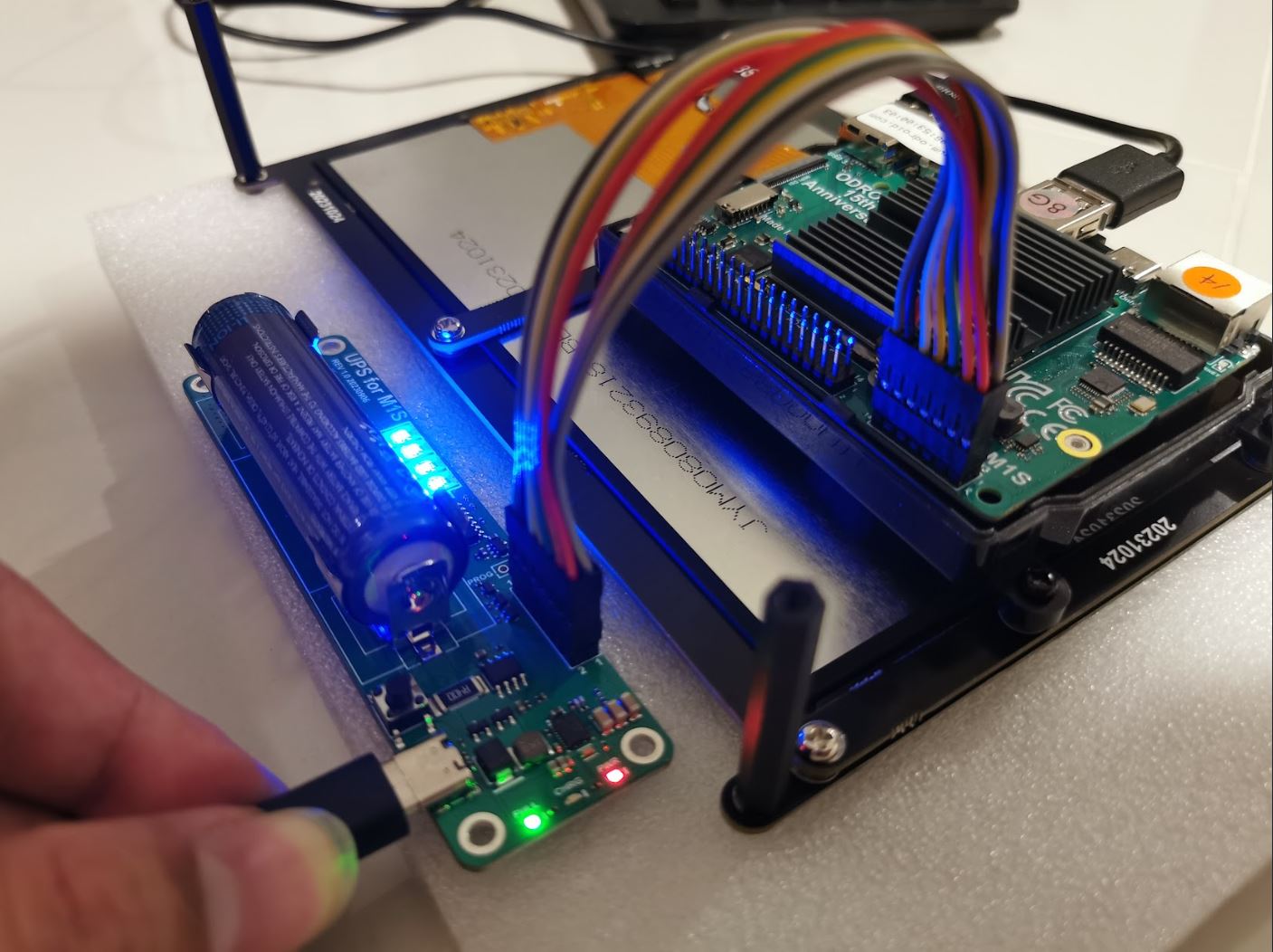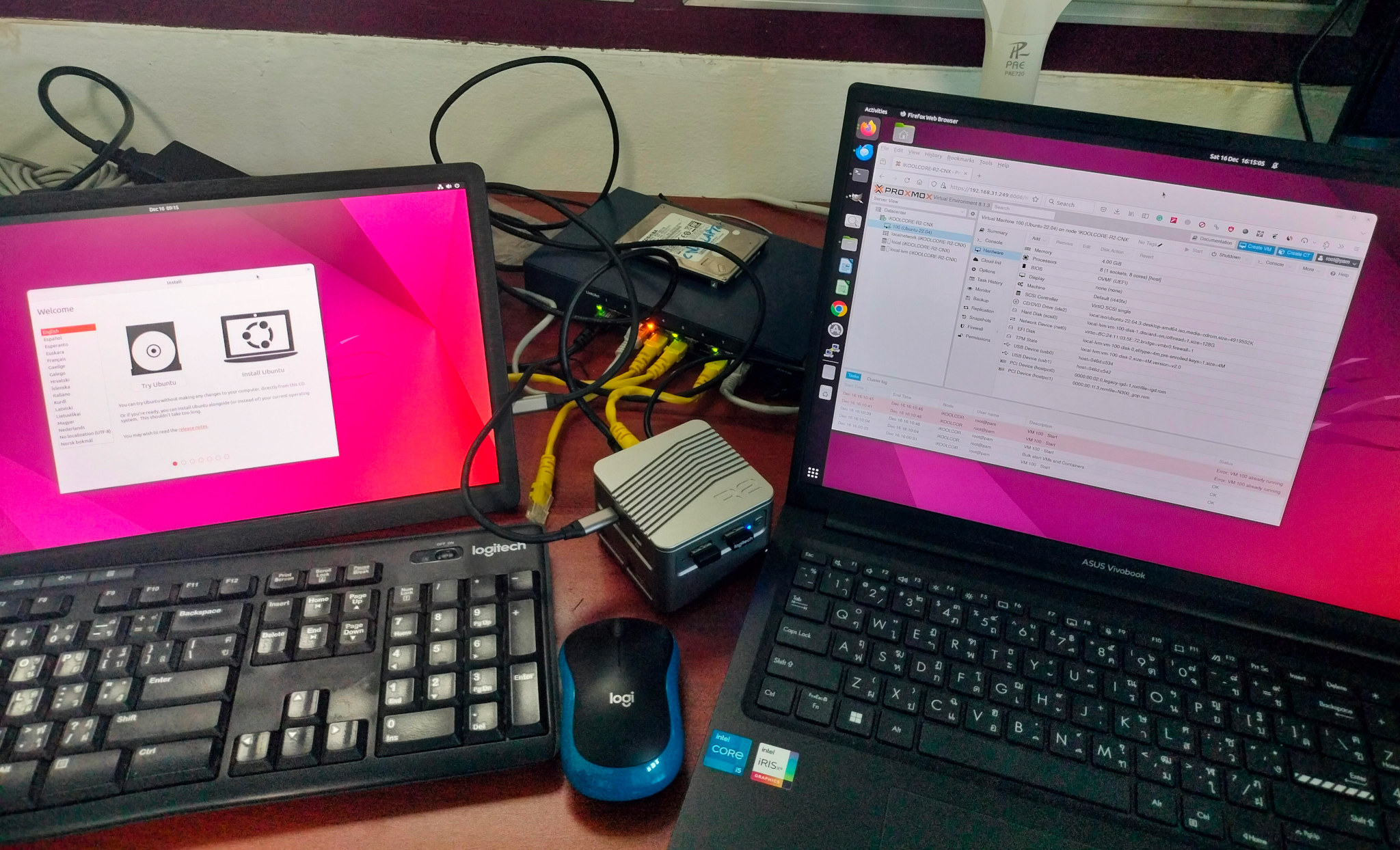The Waveshare “ESP32-S3-LCD-1.28” is an ESP32-S3-based display board featuring a 1.28-inch round LCD screen with a 240×240 resolution, driven by the GC9A01 display driver chip. It also includes a Li-ion battery charger, a QMI8658 6-axis IMU (for motion tracking), a USB Type-C connector, and wireless capabilities. This board is quite similar to others like the Lilygo T-RGB, Round Display for XIAO, ESP32-S3 Round SPI boards. However, it’s thinner and more affordable. Waveshare ESP32-S3-LCD-1.28 development board specifications: Wireless MCU – ESP32-S3 Xtensa 32-bit LX7 dual-core, up to 240MHz frequency. Display: 1.28-inch round IPS LCD. Resolution – 240×240 pixels. 65K color. Display Chip – GC9A01A. IMU Parameters: Sensor – QMI8658 Accelerometer resolution – 16-bit; Range (Optional): ±2, ±4, ±8, ±16g. Gyroscope resolution – 16 bits; Range (Optional) – ±16, ±32, ±64, ±128, ±256, ±512, ±1024, ±2048°/sec. Memory: Built-in 512KB SRAM. 384KB ROM. Onboard 2MB PSRAM. External 16MB Flash memory (W25Q128JVSIQ). Wireless Connectivity: […]
LILYGO T-Panel – A 4-inch HMI display and WiFi, BLE, and 802.15.4 gateway based on ESP32-S3 and ESP32-H2
LILYGO T-Panel is both a 4-inch HMI display and IoT gateway based on ESP32-S3 WiFi 4 and Bluetooth LE 5 microcontroller and an ESP32-H2 module with Bluetooth LE 5 and an 802.15.4 radio for Zigbee, Thread, and Matter connectivity. Last year, Espressif introduced the ESP-Thread Board Router/Zigbee gateway board with ESP32-S3 and ESP32-H2 to show how both chips could be combined to create IoT gateways. But I don’t think I had seen a company design a product based on both ESP32-S3 and ESP32-H2 until I saw the T-Panel which also includes an RS485 interface and Qwiic expansion connectors for good measure. T-Panel specifications: Wireless chips/modules Wireless SoC – ESP32-S3R8 dual-core Tensilica LX7 microcontroller @ 240 MHz 2.4 GHz 802.11n WiFi 4 and Bluetooth 5.0 LE connectivity Memory – 8MB PSRAM Wireless module – ESP32-H2-MINI-1 module MCU – Espressif Systems ESP32-H2 32-bit RISC-V microcontroller at up to 96 MHz with 320 […]
Raspberry Pi 5 industrial HMI displays gain M.2 NVMe SSD, RS232/RS485 interfaces, audio input/output jacks
EDATEC ED-HMI3020 is a family of Raspberry Pi 5-based industrial HMI displays that build upon the earlier ED-HMI3010 panel PCs by adding an M.2 socket for NVMe SSD, RS232 and RS485 interfaces, as well as 3.5mm audio input and output jacks. The new models are still offered with either a 7-inch (1024×600) or 10.1-inch (1200×800) touchscreen display, a Raspberry Pi 5 with 4GB or 8GB RAM with all main ports (HDMI, Ethernet, USB) accessible externally, and support for an optional 8MP front-facing camera. ED-HMI3020 specifications with differences again ED-HMI3010 highlighted in bold or strikethrough: SoC – Broadcom BCM2712 CPU – Quad-core Arm Cortex-A76 processor @ 2.4 GHz with crypto extensions, 512KB per-core L2 caches, 2MB shared L3 cache GPU – VideoCore VII GPU @ 800 MHz with support for OpenGL ES 3.1, Vulkan 1.2, 4Kp60 HEVC decoder System Memory – 4GB or 8GB LPDDR4X-4267 SDRAM Storage MicroSD card socket M.2 […]
How I “fixed” the display on Lichee Console 4A terminal
When I wrote a hands-on post about Lichee Console 4A RISC-V development terminal I noted the display would sometimes have strange effects or simply go black. I’ve now fixed the issue, and I was just probably unlucky since the issue must be rare, but I’ll still document it in case somebody encounters a similar problem and for fun! First, the video below shows what I would see on my terminal after using it for a few minutes. Since then, the display has gone completely dark, and all I see is the backlight, but I can still access the device through an SSH terminal. It looks like a bad connection issue, but I still contacted Sipeed and they told me it must have been the display connector. So I turned off the device and reopened the enclosure to remove and reinsert the cable for the display as shown in the photo […]
Review of Elecrow’s 3.5-inch and 7.0-inch ESP32 display modules using Arduino programming
Hello, I’m excited to review the ESP32 display modules and HMI touchscreens from Elecrow with sizes ranging from 2.4 to 7.0 inches. For this review, Elecrow kindly provided me with both 3.5-inch and 7.0-inch models. While their screens differ in size, both modules share several components, such as the ESP32 microcontroller, making them adaptable options for a variety of projects. The Elecrow 7.0-inch display module is powered by the ESP32-S3-WROOM-1-N4R8 module equipped with an ESP32-S3 dual-core LX6 32-bit microprocessor, 4 MB of flash, 384 kB of ROM, and 512 kB of SRAM. This microcontroller supports both WiFi and Bluetooth for wireless communication. The 7.0-inch display itself is a capacitive touch screen with a resolution of 800×480 pixels. The display is controlled by the EK9716BD3/EK73002ACGB driver and is compatible with LVGL for additional functionality. In the case of the 3.5-inch display module, the main difference is the use of the ESP32-WROOM-32-N4 […]
LILYGO T4-S3 board combines 2.41-inch AMOLED touchscreen display with ESP32-S3R8 microcontroller
LILYGO T4-S3 is yet another ESP32-S3 board with an integrated display, but the main difference here is the 2.41-inch AMOLED touchscreen display with brighter colors than typical TFT displays. It’s actually not the first ESP32-S3 board with an AMOLED display from LILYGO as we previously covered the T-Track and T-Display-S3 AMOLED boards from the company, but the new T4-S3 has a larger 2.41-inch display with touchscreen function and an aspect ratio that may make it more suitable for a wider range of HMI applications. LILYGO T4-S3 specifications: SoC – Espressif ESP32-S3R8 CPU – Dual-core Tensilica LX7 microcontroller up to 240 MHz with vector instructions for AI acceleration Memory – 8MB PSRAM Wireless – WiFi 4 and Bluetooth 5.0 LE + Mesh connectivity Storage – 16MB SPI flash, MicroSD card socket Display – 2.41-inch RGB AMOLED touchscreen display with 600×450 resolution (QSPI controller) with 800cd/m2 brightness, 36.2 x 48.96mm active […]
ODROID-M1S review – Part 1: Ubuntu 20.04, Vu8S touchscreen display, UPS Kit, and WiFi Module 5BK
Hardkernel ODROID-M1S single board board was recently launched to celebrate the company’s 15th anniversary. While the ODROID-M1 board was introduced with the Rockchip RK3568 SoC last year, the new ODROID-M1S board is smaller and cheaper starting at just $49 and comes with a Rockchip RK3566 SoC. Hardkernel sent us a sample of the ODROID-M1S board for review with 8GB of memory and 64GB of storage as well as accessories. Let’s unpack the box before trying it out with Ubuntu 20.04 Desktop and testing each accessory. ODROID-M1S unboxing with ODROID-Vu8S display, UPS kit, and WiFi dongle The review package we received from Hardkernel included the ORDROID-M1S SBC in its plastic enclosure, the VU8S 8-inch touchscreen display, a UPS board, and a dual-band WiFi 5 USB dongle. The UPS module comes without a battery, so we had to find an 18650 battery to use it. As we’ll see further below, the UPS […]
How to use a monitor and USB mouse/keyboard in Promox VE on an Intel Alder Lake-N mini PC
We’ve started to see several Alder Lake-N platforms acting both as a mini PC and a router or network appliance with products such as iKOOLCORE R2 or CWWK x86-P5 which features not only the usual HDMI, USB, and single Ethernet port, but come with multiple Ethernet ports making them ideal to run Proxmox VE to simultaneous run a desktop OS such as Ubuntu 22.04 or Windows 11 and a headless network OS such as pfSense or OpenWrt. I’m currently reviewing iKOOLCORE R2 mini PC that comes with four 2.5GbE ports and I could install Ubuntu 22.04 Desktop, pfSense 2.7.1, and OpenWrt 23.05 relatively easily, but the Ubuntu desktop is only visible in the Proxmox VE dashboard and the HDMI display physically connected to the mini PC only shows Proxmox VE login prompt. So at this point, I learned that I had to enable PCIe passthrough for the GPU in Proxmox […]


